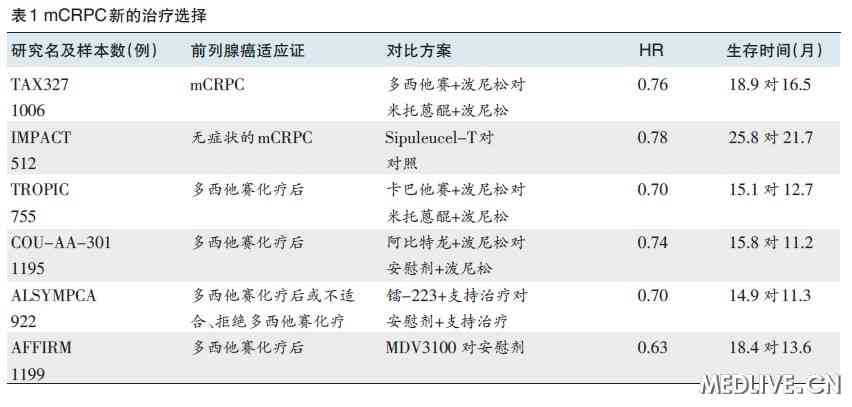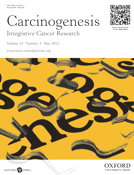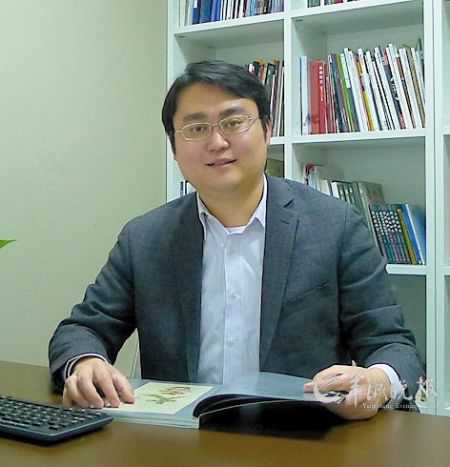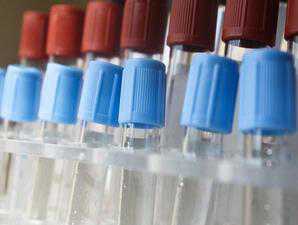Clin Cancer Res:索拉非尼抗肝癌血管生成机制
2012-09-06 Beyond 生物谷
在肝癌中,肝细胞是过表达缺氧诱导因子(HIF)-1α的,HIF-1α导致血管生成和肝癌患者预后较差。索拉非尼是一种多激酶抑制剂,已经在临床试验中证明能显著改善晚期肝癌患者生存率。然而,索拉非尼的抗血管生成机制尚未完全阐明。一项最新发表在Clinical Cancer Research杂志上的研究旨在探讨索拉非尼对肝癌细胞和异种移植肝癌细胞HIF-1α表达和活化的影响。 该研究采用Western印
在肝癌中,肝细胞是过表达缺氧诱导因子(HIF)-1α的,HIF-1α导致血管生成和肝癌患者预后较差。索拉非尼是一种多激酶抑制剂,已经在临床试验中证明能显著改善晚期肝癌患者生存率。然而,索拉非尼的抗血管生成机制尚未完全阐明。一项最新发表在Clinical Cancer Research杂志上的研究旨在探讨索拉非尼对肝癌细胞和异种移植肝癌细胞HIF-1α表达和活化的影响。
该研究采用Western印迹法和定量PCR阵列分别用来确定HIF-1α蛋白及mRNA的表达情况。HIF-1α蛋白的合成、HIF-1α蛋白的活性以及血管内皮生长因子的分泌均采用检测试剂盒测定。结果证实索拉非尼剂量依赖性地降低了缺氧诱导的HIF-1α蛋白的表达和活化。
进一步分析显示,索拉非尼减少HIF-1α的表达与抑制HIF-1α蛋白的合成相关,而不是通过促进HIF-1α蛋白降解或抑制HIF-1αmRNA来实现的。此外,mTOR、ERK等蛋白的磷酸化水平显著被索拉非尼抑制。
体内研究进一步证实索拉非尼对HIF-1α和VEGF蛋白的表达具有抑制作用,导致肿瘤血管形成减少以及异种移植的肿瘤生长受到抑制。临床前数据证实索拉非尼抗血管生成机制是通过抑制HIF-1α和VEGF蛋白表达来实现的。

doi:10.1158/1078-0432.CCR-12-0552
PMC:
PMID:
Sorafenib inhibits hypoxia-inducible factor-1α synthesis: implications for anti-angiogenic activity in hepatocellular carcinoma
Li-ping Liu, Rocky LK Ho, George G Chen,*, and Paul Lai
Purpose:The overexpression of hypoxia-inducible factor (HIF)-1α is a common finding in hepatocellular carcinoma (HCC), and it leads to angiogenesis and poor prognosis. Sorafenib, a multikinase inhibitor, has demonstrated significant improvement in survival in patients with advanced HCC in clinical trials. However, the mechanisms that account for the anti-angiogenic efficiency of sorafenib have not been fully elucidated. The present study aims to explore the effect of sorafenib on HIF-1α expression and activation in HCC cells and xenografts. Experimental Design:HCC cells and xenografts were treated with sorafenib or vehicles. Western blotting and qPCR array were employed to determine protein and mRNA expression, respectively. HIF-1α activity, de novo protein synthesis and VEGF secretions were determined using assay kits. Results:Sorafenib dose-dependently decreased the hypoxia-induced accumulation and activation of HIF-1α protein. Further analysis revealed that such reduction of HIF-1α was associated with the inhibition of HIF-1α protein synthesis rather than the promotion of HIF-1α protein degradation or the reduction of HIF-1α mRNA. Moreover, the phosphorylation levels of mTOR, ERK, p70S6K, RP-S6, 4E-BP1 and eIF4E were significantly suppressed by sorafenib. In vivo studies further confirmed the inhibitory effect of sorafenib on the expression of HIF-1α and VEGF proteins, leading to a decrease in tumor vascularisation and growth of the xenografts. Conclusions:Sorafenib-mediated inhibition of HIF-1α synthesis is associated with previously undefined pathways in which mTOR/p70S6K/4E-BP1 and ERK phosphorylation are downregulated. Our preclinical data expand our understanding of sorafenib's anti-angiogenic mechanism of action by inhibiting HIF-1α and VEGF protein expression.
作者:Beyond
版权声明:
本网站所有注明“来源:梅斯医学”或“来源:MedSci原创”的文字、图片和音视频资料,版权均属于梅斯医学所有。非经授权,任何媒体、网站或个人不得转载,授权转载时须注明“来源:梅斯医学”。其它来源的文章系转载文章,本网所有转载文章系出于传递更多信息之目的,转载内容不代表本站立场。不希望被转载的媒体或个人可与我们联系,我们将立即进行删除处理。
在此留言








